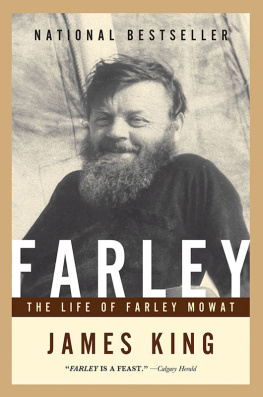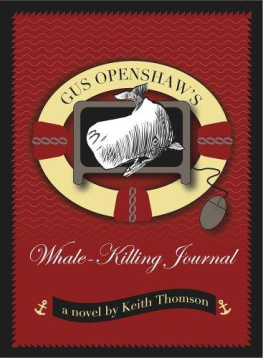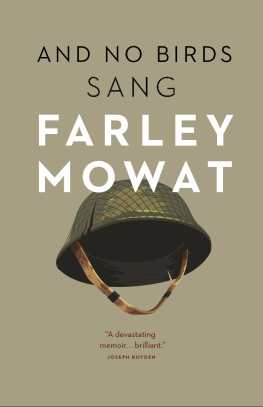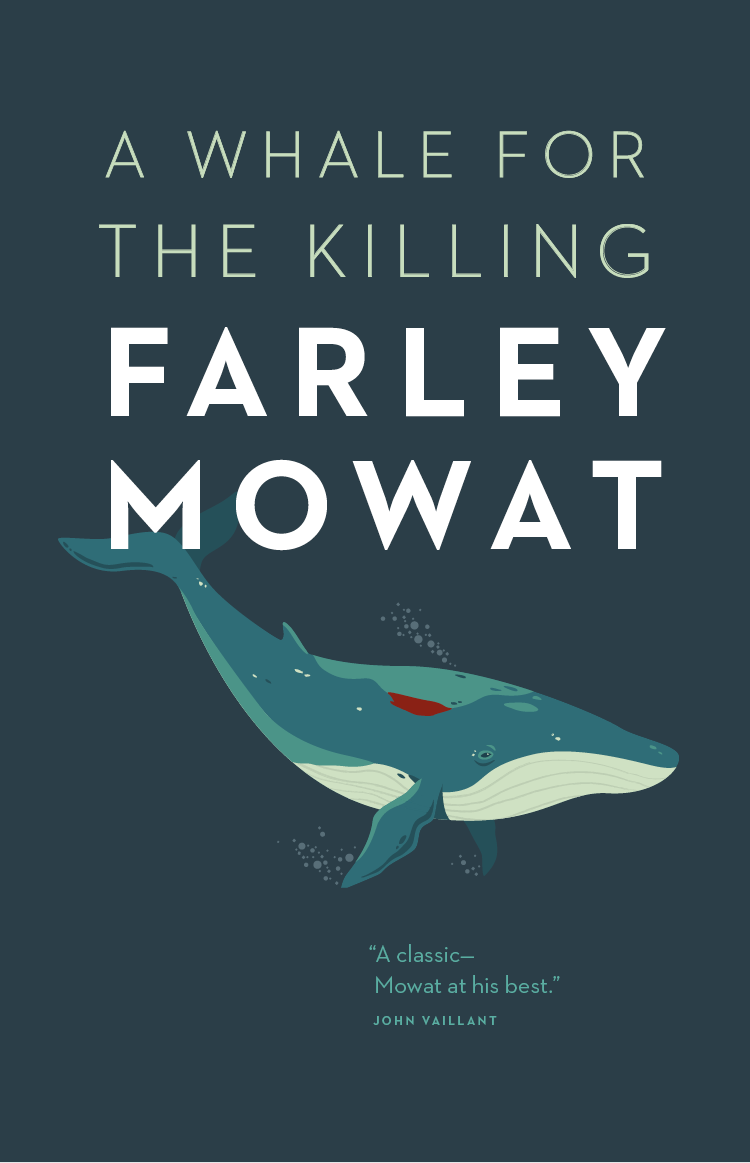Remote from universal nature, and living by complicated artifice, man in civilization surveys the creature through the glass of his knowledge and sees thereby a feather magnified and the whole image in distortion. We patronize them for their incompleteness, for their tragic fate of having taken form so far below ourselves. And therein we err, and greatly err. For the animal shall not be measured by man. In a world older and more complete than ours they move finished and complete, gifted with extensions of the senses we have lost or never attained, living by voices we shall never hear. They are not brethren, they are not underlings; they are other nations, caught with ourselves in the net of life and time, fellow prisoners of the splendour and travail of the earth.
1
A TORMENT OF SOOTY CLOUD scudded out of the mountainous barrens of southeastern Newfoundland. Harried by a furious noreaster, eddies of sand-sharp snow beat against the town of Port aux Basques; an unlovely cluster of wooden buildings sprawled across a bed of cold rock and colder muskeg. White frost-smoke swirled up from the waters of the harbour to marry the cloud wrack and go streaming out across Cabot Strait toward the looming cliffs of Cape Breton and the mainland of North America.
January deals harshly with Newfoundland. It had just dealt harshly with me and my wife, Claire, and the hundred or so other passengers who had endured the crossing of the Cabot Strait to Port aux Basques aboard the slab-sided, floating barn of a car ferry, William Carson. The passage from North Sydney, in Nova Scotia, normally takes six hours. This time the storm had extended it to twelve, and the Carson, savaged by that surging sweep of wind and water, had meanly revenged herself on passengers and cargo. A ten-ton bulldozer, lashed to the deck with half-inch cables, had been pitched right through the steel bulwarks into the green depths. Grey-faced and desolate, most of the passengers lay helplessly asprawl in cabins reeking with the stench of vomit.
When the Carson eventually wallowed into Port aux Basques harbour and managed to get her lines ashore, there was a grateful if unsteady exodus down her gangplank. Most of the debarking passengers clambered aboard the antiquated coaches of a narrow-gauge railway which dawdled its way for six hundred miles to St. Johns, the island capital, on the eastern coast. However, for a score of men, women and children (Claire and I among them) Port aux Basques was not the end of the ordeal by sea. Our destinations were a scattering of sea-girt fishing villagesoutports, they are calledthinly spread along the hundreds of miles of bold, bald headlands and canyoned fjords of the islands Souwest Coast. There was only one way to reach any of these placesthe weekly coastal steamer.
She was waiting for us: small, dowdy, dirty; in sharp contrast to the sham grandeur of the Carson. But, unprepossessing as she looked, the SS Burgeo was wise in the ways of the unforgiving world of water. She was a proper seaboat, not a floating motel. Day in, day out for more than twenty years, she had shuttled east and west along that iron shore, furnishing the physical link between the outports. She also provided the principal contact with the outside world for some forty fishing villages which clung between wind and water to one of the least hospitable coasts on earth.
By 1967 more than half the outports originally served by the Burgeo had been abandonedclosed out, as their forcibly uprooted inhabitants described it. These age-old settlements had become victims of the cult of Progress even as the Burgeo herself was soon enough to become such a victim. In 1969 she was condemned, although still as sound as ever, and sold for scrapan unwanted anachronism from an age now past and rejected. Left lying at a wharf in St. Johns, she was stripped by souvenir hunters, and the coldness of a dead ship spread through her. But she was not quite dead. One dark winters night, just before the cutting torches could start eating into her good Scots iron, she committed herself to her own element. So quietly that not even the watchman knew what she was about, she settled to the bottom of the harbour, there to become a monumental embarrassment to the authorities and a remembered heroine to the many thousands of outport people who had known and loved her during the long years of her service.
However, in mid-January of 1967 the Burgeo was still very much alive. Her master, Captain Ro Penney, welcomed us aboard as we scrambled up the gangplank through a burst of driven sleet.
A small, neat, precise man, Skipper Ro was shy of women. He flushed and ducked his head as Claire came aboard.
Well, me dear, youre back again, he muttered, apparently addressing his own feet. Nip in out of the wet now. Tis dirty weather... dirty weather...
He turned more familiarly to me.
Come on the bridge, Skipper Mowat. Wed best get underway afore this noreaster busts its guts!
During the years Claire and I had known the Souwest Coast we had made at least a dozen voyages with Skipper Ro. We met him first in the gloomy fjords of Bay Despair in 1961 on a day when I brought my own leaky little schooner alongside the Burgeo looking for help in repairing my ancient engine. Not only did I get the assistance of the chief engineer, Captain Ro himself came aboard my little vessel, having first asked formal permission to do so. He paid me a high compliment by addressing me as Skipper, and he never failed to use the title whenever we met again.
I wish I could still do him equal honour, for, like the Burgeo, Captain Ro is also gone. During a heavy galeit was more nearly a hurricanein Cabot Strait in the spring of 1970, he took the 10,000-ton train ferry Patrick Morris out of North Sydney in response to a distress call from a herring seiner. The seiner foundered before the Morris could reach her, and while Skipper Ro was trying to recover the body of one of the drowned fishermen, a forty-foot sea stove in the ferrys stern loading door swamped her, and the big ship began to go down. Captain Ro ordered the crew to the boats but three of the engine room crowd could not be found, and Ro Penney refused to leave without them. He was a quiet man, and steadfast to the end.
Skipper Ro tugged at the whistle lanyard and the Burgeo s throaty voice rang deep and melancholy over the spume-whipped harbour. The lines came in and we backed out into the stream. Once clear of the fairway buoy, the little ship bent to the gale and headed east, holding close in against the looming, snow-hazed land to find what lee there was.
I went below to the old-fashioned dining saloon with its Victorian, leaded glass windows, worn linen tablecloths, and battered but gleaming silverware. Most of the passengers were gathered there, having a mug-up of tea and bread and butter, and yarning companionably, for on the Souwest Coast everyone knows everyone else, or is at least known to everyone else. Claire was sitting between the owner of a small dragger and his dumpy, jovial wife. I joined them. The noreaster screamed in the top-hamper and the old reciprocating steam engine thumped its steady, heavy heartbeat underfoot as we listened to the gossip of the coast.

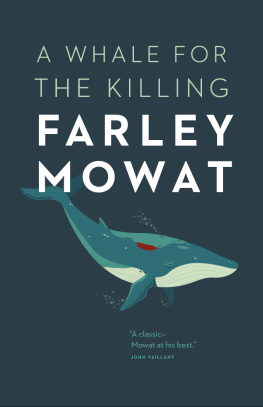
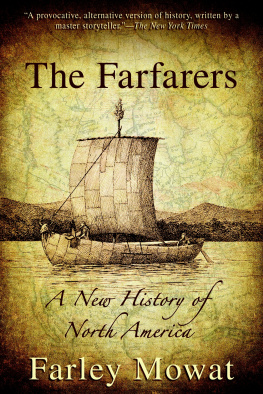
![Farley Mowat - People of the Deer [Paperback]](/uploads/posts/book/52958/thumbs/farley-mowat-people-of-the-deer-paperback.jpg)

